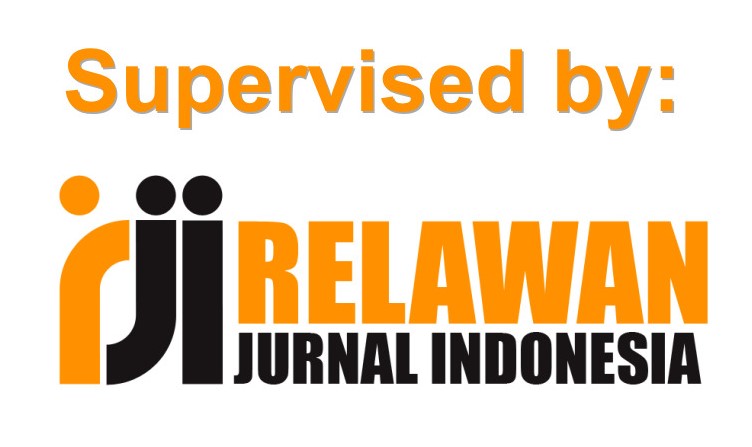Turning Beats into Voices of Change: Moral Values in Papuan Urban Music
DOI:
https://doi.org/10.24114/grenek.v13i2.59803Keywords:
Urban Music, Moral Values, Hip-Hop, Papuan Culture, Cultural ExpressionAbstract
This study investigates the transformative role of urban music, particularly Hip-Hop, in addressing moral values within the Papuan context. Young Papuan musicians utilize Hip-Hop as a medium for social critique and cultural expression, embedding themes such as justice, environmental stewardship, and resilience in their lyrics. Employing a qualitative approach, the research analyzed song lyrics, performances, and social media content from members of the Bhuyaka Art Center, complemented by in-depth interviews. The findings reveal that Papuan Hip-Hop artists effectively navigate global influences while maintaining cultural authenticity, using music to critique systemic injustices and celebrate local heritage. Notably, the integration of local linguistic elements underscores its role in preserving cultural identity amidst globalization. The study highlights the genre's dual function as an expressive art form and a tool for advocacy, bridging local and global narratives. This research contributes to the discourse on urban music as a catalyst for cultural preservation and moral discourse, emphasizing its potential in fostering societal change and empowering marginalized communitiesReferences
Anas, M., Frank, S. A. K., & Idris, U. (2020). Anana Bicara-Bicara: Selera Musik, Gaya Hidup, dan Strategi Rapper di Kota Jayapura. CENDERAWASIH: Jurnal Antropologi Papua, 1(1). DOI: https://doi.org/10.31957/jap.v1i1.1381
Benvenga, L. (2022). Hip-hop, identity, and conflict: Practices and transformations of a metropolitan culture. Frontiers in Sociology, 7. DOI: https://doi.org/10.3389/fsoc.2022.993574
Błażejewska, A. (2023). Urban Values in the Digital Space. The Street Art Roots of NFTs as a Problem. Acta Universitatis Lodziensis. Folia Philosophica. Ethica-Aesthetica-Practica, 41. DOI: https://doi.org/10.18778/0208-6107.41.04
Bradley, A. (2017). Book of rhymes: The poetics of hip hop. Civitas Books.
Carletti, C. (2019). Educational and Intercultural Dialogue among Younger Generations for the Full Enjoyment of their Rights as a New Challenge within City Spaces. Peace Human Rights Governance, 3(Peace Human Rights Governance 3/1), 69–95. DOI: https://doi.org/10.14658/pupj-phrg-2019-1-3
Cloete, A. (2022). Resisting to the beat: Exploring the theological and educational significance of Hip Hop as an act of resistance. Journal of Youth and Theology, 31(12). DOI: https://doi.org/10.1163/24055093-bja10037
Conti, U. (2020). Urban youth in transformation: Considerations for a sociology of trap subculture. Italian Sociological Review, 10(2). DOI: https://doi.org/10.13136/isr.v10i2.339
Creswell, J. W. (2015). Penelitian Kualitatif dan Desain Riset. Yogyakarta: Pustaka Pelajar.
Evans, J. (2019). “Deeper than Rap”: Cultivating racial identity and critical voices through Hip-hop recording practices in the music classroom. Journal of Media Literacy Education, 11(3). DOI: https://doi.org/10.23860/jmle-2019-11-3-3
Frait, O. (2022). «Urban music» in intermedial and artistic studies of Ukrainian culture of the 1920’s. National Academy Of Managerial Staff Of Culture And Arts Herald, 1. DOI: https://doi.org/10.32461/2226-3209.1.2022.257668
Frank, S. A. K., Idris, U., & Anas, M. (2021). Strategy to Popularize Hip-Hop Music Through Digital Platforms in Jayapura Papua. ISoLEC Proceedings, 5(1), 121–127. DOI: https://doi.org/10.31004/cdj.v4i2.12123
Grebe, A. M. (2018). The Arts, Civic Engagement, and Urban Youth. In Civic Engagement and Politics. DOI: https://doi.org/10.4018/978-1-5225-7669-3.ch042
Hidayatulloh, H., Erdős, É., & Szabó, M. (2022). The Intricate Justice of Poverty: A Case of the Land of Gold in Indonesian Papua. Journal of Indonesian Legal Studies, 7(2). DOI: https://doi.org/10.15294/jils.v7i2.58030
Huang, X., & Fan, D. (2021). Global connectedness, local embeddedness and creative economies in European cities. Regional Studies, 55(7). DOI: https://doi.org/10.1080/00343404.2021.1880002
Jamatia, P. L. (2022). The Role of Youth in Combating Social Inequality: Empowering the Next Generation. Journal of Language and Linguistics in Society, 26. DOI: https://doi.org/10.55529/jlls.26.11.20
Jiwangga, J. B. J. (2023). Papua Dalam Rima: Kajian Intermedial Tentang Konstruksi Identitas Sosial Pada Lima Lagu Hip-Hop Papua. Seminar Nasional Literasi Prodi PBSI FPBS UPGRIS, 821–835. https://conference.upgris.ac.id/index.php/snl/article/view/4925
Lipset, M., & Low, B. (2022). A Different Energy: The Critical Hip-Hop Teaching Artist and School Culture. Urban Education. DOI: https://doi.org/10.1177/00420859221126711
Mbaye, B. (2016). Rhyme’s Challenge: Hip Hop, Poetry, and Contemporary Rhyming Culture. Popular Music and Society, 39(1). DOI: https://doi.org/10.1080/03007766.2014.988432
Morgan, J.-A. (2006). Hip Hop Matters: Politics, Pop Culture, and the Struggle for the Soul of a Movement by S. Craig Watkins. The Journal of American Culture, 29(3). DOI: https://doi.org/10.1111/j.1542-734x.2006.00388.x
Nkula-Wenz, L., Sitas, R., & Brown-Luthango, M. (2022). Urban Youth – Engaging Young People and Their Futures in African Cities. (2). DOI: https://doi.org/10.5130/ijcre.v15i2.8487
Peña Guajardo, F. O., & Espejel-Caudillo, V. F. (2020). El campo del arte urbano y su función social en la educación, un estudio de caso, en el colectivo Toy nunca pego, en Pachuca de soto, Hidalgo. Boletín Científico INVESTIGIUM de La Escuela Superior de Tizayuca, 5(10). DOI: https://doi.org/10.29057/est.v5i10.5303
Richards, S. (2015). Hip Hop in Manokwari: Pleasures, Contestations and the Changing Face of Papuanness. In From “Stone-Age” to “Real-Time”: Exploring Papuan Temporalities, Mobilities and Religiosities. DOI: https://doi.org/10.22459/fsart.04.2015.06
Rivera Martínez, Á., Arias Franco, E., Campion, M., Viera, M., Sánchez Kuri, L., Huamaní Paliza, F., & Gómez, R. (2022). Música urbana, juventud y resistencia : un viaje por algunos sonidos underground de América Latina. In Música urbana, juventud y resistencia : un viaje por algunos sonidos underground de América Latina. DOI: https://doi.org/10.11144/javeriana.9789587817201
Sarkar, D. (2023). ‘Azadi’s political until you’re pressing play’: Capitalist realism, hip-hop, and platform affordances. Convergence, 29(6). DOI: https://doi.org/10.1177/13548565231174598
Shawel, T. (2022). Out for Presidents to Represent Me. In Black Popular Culture and Social Justice. DOI: https://doi.org/10.4324/9781003308089-10
Sweet, C. V. (2017). Local Embeddedness Matters: A Study of Hip-Hop Artists’ Interaction With Their Local Community. Louisiana State University and Agricultural & Mechanical College.
Tosin Gbogi, M. (2022). Language, identity, and urban youth subculture. Pragmatics. Quarterly Publication of the International Pragmatics Association (IPrA). DOI: https://doi.org/10.1075/prag.26.2.01tos
Webb, M., & Webb-Gannon, C. B. (2020). Decolonization, popular song and Black-Pacific identity in Melanesia. Media, Culture and Society, 42(1). DOI: https://doi.org/10.1177/0163443719884053
Yende, S. J. (2022). A critical discourse analysis of the influence of contemporary hip-hop music video on gender-based violence. African Journal of Gender, Society & Development, 11(2), 31. DOI: https://10.31920/2634-3622/2022/v11n2a2
Downloads
Published
Issue
Section
License
Copyright (c) 2024 Ambar Sulistyowati, Daniel Kreuta

This work is licensed under a Creative Commons Attribution-ShareAlike 4.0 International License.
Authors published with the Grenek: Jurnal Seni Musik agree to the following terms:
- Authors retain copyright and grant the journal the right of first publication with the work simultaneously licensed under a Creative Commons Attribution License (CC BY-SA 4.0) that allows others to share the work with an acknowledgment of the work's authorship and initial publication in this journal.
- Authors are able to enter into separate, additional contractual arrangements for the non-exclusive distribution of the journal's published version of the work (e.g., post it to an institutional repository or publish it in a book), with an acknowledgment of its initial publication in this journal.
- Authors are permitted and encouraged to post their work online (e.g., in institutional repositories or on their website) prior to and during the submission process, as it can lead to productive exchanges, as well as earlier and greater citation of published work. (See The Effect of Open Access)








